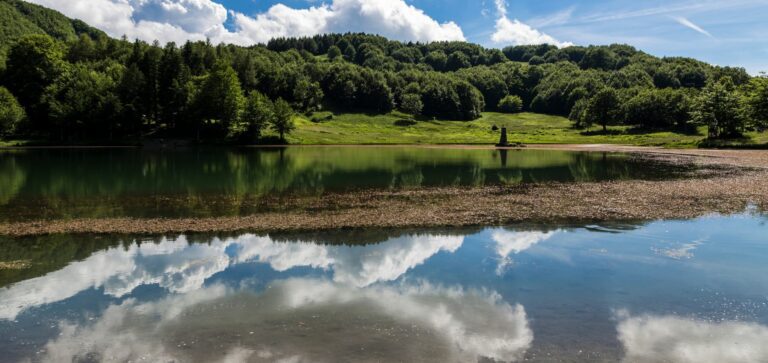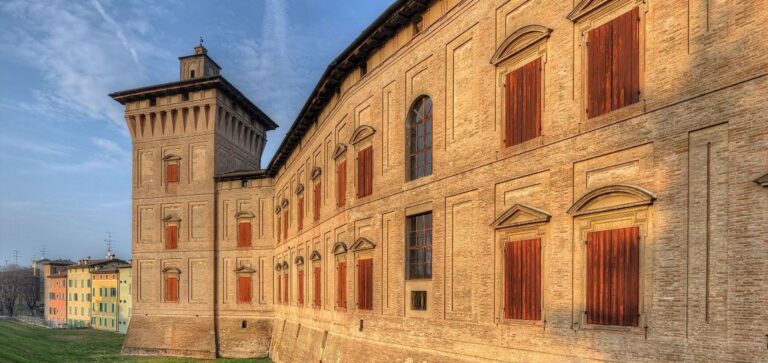What to see in Emilia-Romagna? The region offers a potentially endless list of attractions and places of interest. We have selected 10 of them, which for no reason in the world you can miss!

BASILICA OF SAN PROSPERO IN REGGIO EMILIA
The Basilica of San Prospero, dedicated to the city’s patron saint, is an extraordinary testament to the Emilian Baroque. It is located in the square of the same name in the heart of Reggio Emilia’s historic center. Although the basilica was completed in the 16th century, the imposing facade was instead built in the 18th century. At the edge of the churchyard are six statues of lions carved in red Verona marble by Reggio Emilia sculptor Gaspare Bigi in the early 16th century. The interior is rich in works of art, including: the cycle of frescoes by Bolognese artist Camillo Procaccini depicting the “Last Judgment”; and the precious inlaid wooden choir with country landscapes, still lifes and urban perspectives.

CASTLE OF CANOSSA
The Castle of Canossa is a legendary castle for those who have studied some medieval history. Its notoriety is linked to the historic meeting that took place in chilly January 1077, when Pope Gregory VII absolved Emperor Henry IV from excommunication in the presence of Countess Matilda of Canossa and Abbot Hugh of Cluny. Probably founded in the mid-10th century by Adalbert Atto, it has been destroyed and rebuilt several times. Few ruins survive of the ancient fortress, dating mostly from the late Middle Ages, which are truly worth seeing. On the site is the Naborre Campanini Museum, which houses artifacts from excavations carried out in the area in 1877 and 1893.

DUCAL PALACE OF GUASTALLA
The Ducal Palace of Guastalla is a magnificent Renaissance-style palace that tells a long history of sovereignty. Its construction is linked to the name of Francesco Cipriani, who defined its square arcaded courtyard layout, although it was later architect Tommaso Filippi who completed the work in 1570. The palace was the main building of civil power in the Duchy of Guastalla and hosted poets and artists such as Tasso, Guarini and Guercino. Today the Ducal Palace is a museum and exhibition center: the north wing of the piano nobile houses the Maldotti Picture Gallery, an extraordinary collection of about fifty paintings from the historic Maldotti Library, while some rooms are used for temporary exhibitions.
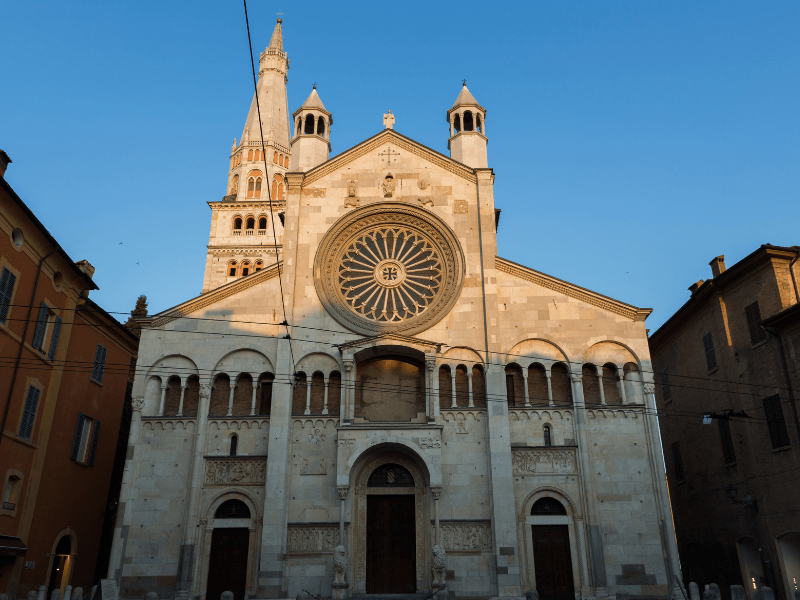
CATHEDRAL OF MODENA
The Cathedral of Santa Maria Assunta in Cielo and San Geminiano, better known as Modena Cathedral, is considered one of the finest examples of Romanesque art. Its construction began in 1099 on a design by architect Lanfranco while the sculptural decoration was entrusted to sculptor Wiligelmo, who was later succeeded by the Maestri Campionesi. In 1997 the cathedral, together with the Torre Ghirlandina and the adjacent Piazza Grande, was declared a UNESCO World Heritage Site with this motivation: “The joint creation of Lanfranco and Wiligelmo is a masterpiece of human creative genius, in which a new dialectical relationship between architecture and sculpture is imposed in the Romanesque style.”

DUCAL PALACE OF SASSUOLO
The Ducal Palace in Sassuolo is one of the most beautiful and important Baroque residences in Italy. It owes its current appearance to Duke Francesco I d’Este, who in the first half of the 17th century commissioned architect Bartolomeo Avanzini to transform the ancient and massive family castle into a ducal residence. The rooms, on the other hand, were decorated mainly by the official court painter Jean Boulanger, as well as other famous artists and decorators such as Angelo Michele Colonna, Agostino Mitelli, Luca Colombi and Lattanzio Maschio. The large complex also includes: the palatine chapel dedicated to St. Francis, among the most significant examples of Este Baroque; and the scenic Peschiera, or “Fontanazzo” as it is called by the Sassolese.

PALACE OF COLORNO
The Reggia di Colorno, also known as the little Versailles of the Bassa, is a monumental architectural structure. It was built on the remains of a military fortress around the mid-14th century, but it was not until the 17th century that it took on the regal appearance that can still be admired today. The palace, surrounded by a park recently restored to its original splendor, includes more than 400 rooms, courtyards and courtyards. Must-sees: the Great Hall, which represents one of the earliest examples of neoclassical decoration in Europe; the New Apartment of Duke Ferdinand of Bourbon, decorated with original frescoes and period woodwork; and the Ducal Chapel of San Liborio, with canvases by famous artists and one of the most valuable ancient organs in existence today.

CASTLE OF TORRECHIARA
Torrechiara Castle, a hamlet in the municipality of Langhirano in the province of Parma, is one of the most remarkable examples of fortified architecture in Emilia-Romagna, if not all of Italy. It was rebuilt between 1448 and 1460 by Count Pier Maria Rossi and was designed not only as a defensive structure but also as an isolated residence for the count himself and his lover Bianca Pellegrini. The castle is a riot of frescoed rooms, including the splendid Camera d’Oro, attributed to Benedetto Bembo. Small curiosity: several scenes from “Ladyhawke,” a 1985 fantasy genre film directed by Richard Donner and starring Rutger Hauer, Michelle Pfeiffer and Matthew Broderick, were filmed in the castle.

MONUMENTAL COMPLEX OF THE PILOTTA IN PARMA
The Monumental Complex of the Pilotta represents one of the main cultural hubs in the city of Parma. The name derives from the Basque pelota game, which was played in its courtyards on special occasions of representation. The palace, consisting of several bodies of buildings, was built by the Farnese family at the end of the 16th century. However, its transformation into a museum institution was due to Maria Luigia of Austria, duchess of Parma and Piacenza from 1816 to 1847. Part of the impressive complex are: the National Gallery of Parma, the National Archaeological Museum, the Palatina Library, the Bodoniano Museum, and the splendid Farnese Theater, considered the first modern theater in the Western world.
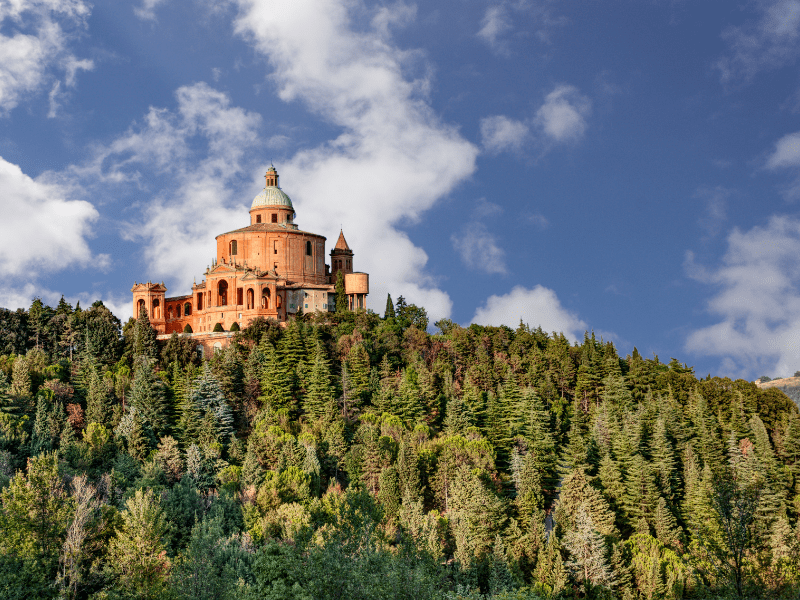
SHRINE OF MADONNA DI SAN LUCA IN BOLOGNA
The Sanctuary of Our Lady of San Luca is a wonderful religious building as well as one of the symbols of Bologna. Located on Colle della Guardia, it is connected to the city center by a characteristic porticoed street that, starting from Porta Saragozza, runs for four kilometers and has more than 600 arches. The church, built between 1723 and 1757 to replace an earlier 15th-century construction, preserves the Byzantine representation of the Madonna and Child, which is carried in procession every year during Ascension Week. The interior features some wonderful works by excellent artists such as Guido Reni and Vittorio Maria Bigari. From the sanctuary you can enjoy a splendid view of the surrounding landscape.

ESTENSE CASTLE OF FERRARA
The Castello Estense, also called the Castle of San Michele, is the majestic symbol of Ferrara as well as one of the jewels of Italian castle architecture. Built by Marquis Nicolò II d’Este in 1385 as an instrument of political and military control, it later became the home of the Este family and a ducal residence. The castle, which encompasses more than six hundred years of history within its walls, towers over the center of the city with its four towers: Torre Marchesana, Torre di San Paolo, Torre di Santa Caterina and the splendid Torre dei Leoni, from which there is a breathtaking view of Ferrara from above. Today it is a permanent museum venue and also hosts temporary exhibitions of various kinds.
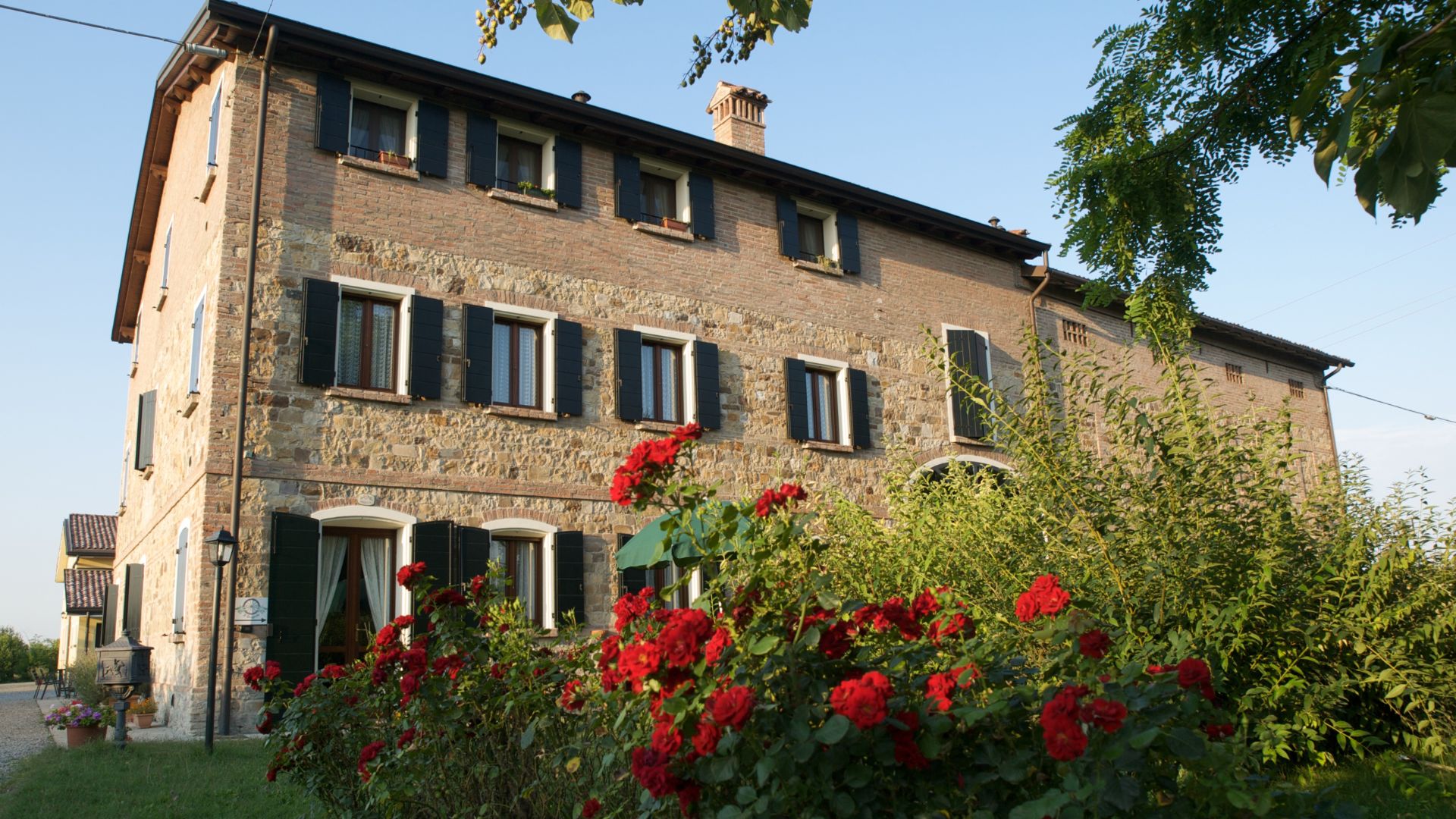
AGRITURISMO IL BRUGNOLO
Welcome to il Brugnolo
If you’re looking for completely independent apartments surrounded by greenery you really are in the right place here!
In fact, Brugnolo is immersed in the green nature of the Emilian countryside. For your relaxation, for that of your children, and again for the runs of your 4-legged friends, you will have 6000 square meters of park at your disposal!


